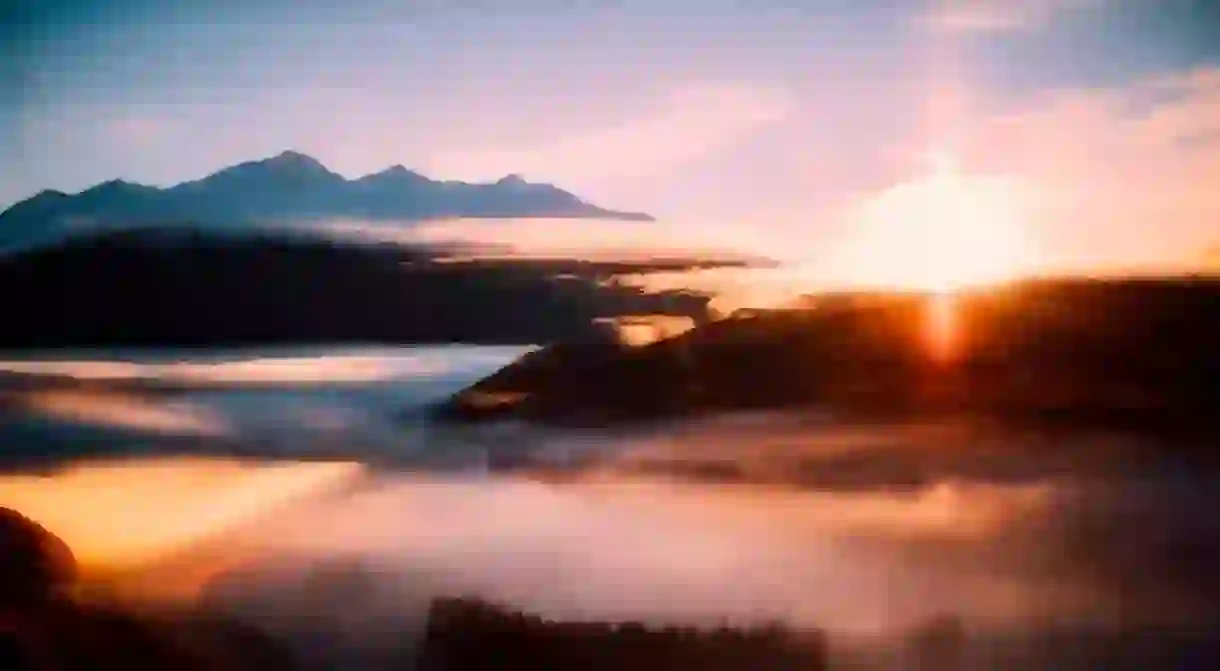12 Things You Didn't Know About New Zealand

How much do you really know about New Zealand? Yes, it is a country with plenty of cinematic acclaim, incredibly diverse landscapes and arguably a few too many dormant volcanoes. It is also a pioneer in many ways, a place of world-firsts, and a land with interesting quirks that will wow all trivia enthusiasts. Here are 12 tidbits to spark your curiosity.
New Zealand is, in every sense, a very young country
Not only was New Zealand the last habitable place to be settled by humans, it is also one of the youngest in geological terms. The country’s bedrock was formed some 85 million years ago, after splitting from Gondwana and shifting into the Pacific Ocean. The first Polynesian settlers arrived in New Zealand between 1200 and 1300 AD.
Its Maori name, Aotearoa, means ‘Land of the Long White Cloud’
Aotearoa was initially used to describe the North Island, before evolving into the official Maori name for the entire country. It is most commonly translated as the ‘Land of the Long White Cloud’: with Ao being the cloud, daylight or dawn; tea meaning white, bright or clear; roa being something long or tall. The name is mostly tied to the legend of Kupe, the voyager who was guided to New Zealand by a long white cloud during the day, and a bright cloud at night.

The word ‘Maori’ wasn’t used until European settlement
Originally, ‘Maori’ was a word that meant ‘ordinary’. New Zealand’s indigenous population started using the name to distinguish themselves from the newly-settled ‘Pakeha’ (i.e. Europeans/white people). Before the Europeans arrived, they were simply known as Polynesians with their own tribal groups (iwi).
Most of New Zealand’s place names are technically not official
The New Zealand Geographic Board is in charge of officiating the names of towns and cities, taking into account factors like history, Maori nomenclature, and spellings. ‘Recorded’ is the classification given to unofficial but widely used place names, a list that includes major centres like Wellington, Taupo, Greymouth, and Whangarei. There are approximately 16,000 official and 33,000 recorded place names in New Zealand.

Wellington is the world’s southernmost capital
The region, which sits at the lower end of the North Island, also consists of some 496,000 inhabitants, which accounts for 10.6% of New Zealand’s population. Aside from being the capital city, Wellington is renowned for being the country’s hub for arts and culture.
Interestingly enough, New Zealand is not the closest point to Antarctica
While Christchurch is widely regarded as the ‘Gateway to Antarctica’, it is South America that gets full bragging rights for its proximity to the continent. Ushuaia, the southernmost city in Argentina, is 1238 kilometres (769.3 miles) north of Antarctica. In contrast, Christchurch is 3,832 kilometres (2381 miles) from Scott Base, which tends to be the main point of entrance for those reaching this icy land from New Zealand.

Auckland, the city of sails, boasts the world’s highest boat ownership per capita
In fact, New Zealanders in general are quite avid sailors: some 30,000 Kiwis belonged to yacht clubs in 2001. Auckland was the main centre for yacht builders in the 1890s, and its traditional Anniversary Day Regatta has been taking place since 1862.
New Zealand has three official languages
English is the most widely spoken, and is used in all levels of society, from legislation to education and community life. Maori and New Zealand Sign Language also hold official status, and can be used in legal proceedings with the aid of interpreters. Te Reo Maori is taught in most schools, as well as being incorporated in various parts of every day life.

The country was a pioneer for women’s rights
On 19 September 1883, a new Electoral Act was passed into law, making New Zealand the very first self-governing country to give women the right to vote. By comparison, women were only granted electoral rights in Britain and the United States after the First World War. New Zealand’s suffrage movement was led by Kate Sheppard, whose historic contribution has been immortalised on the NZ $10 note and in some Wellington’s pedestrian crossings.
Despite its scientific contributions, New Zealand is staunchly nuclear free
Ernest Rutherford, the Nobel Prize winning physicist who was the first to ‘split’ the atom, was born and bred in New Zealand. His discovery may have paved the way for nuclear research, but New Zealand has always maintained a strong nuclear-free stance, even amid political pressure. Still, Rutherford is widely revered by the locals: he features on the NZ $100 note, has scientific institutions and school houses named after him, and even received his own stamp in 2008.

In 1990, it became the first country to appoint a national wizard
Ian Brackenbury Channell, better known as The Wizard, has been a famous fixture of downtown Christchurch since the 1970s. Before that, he was appointed the Wizard of the University of New South Wales, where he was studying towards a PhD in sociology. His famous orations led him to be appointed the status of Archwizard of Canterbury in 1980. 10 years later, the Prime Minster gave the iconic character his official Wizard of New Zealand title.
And in 2017, it was the first place to grant human rights to a river
In March 2017, the Whanganui River became the first in the world to be given human rights status. Maori had been fighting for more than 160 years to get this special recognition for its river, a move that allows its spiritual importance to be directly acknowledged in legislation and court proceedings.














